There can be your advertisement
300x150
Ceiling Beams, Decorative Beams for Ceiling
But today's opinion has changed dramatically: these details are increasingly becoming part of the design. Even more so, many specifically install false beams to achieve full correspondence with a particular style. So what can be said about these items that aspire to become full-fledged elements of interior design?
Beams as Part of the Design
With the right approach to interior design, described structures harmoniously fit into both country houses and urban apartments. Ceilings with beams that contrast the overall room tone always draw attention. Even if these structures have the same shade as the entire interior, finishing materials in the house still stand out from the general picture due to their texture and massiveness. The presence of beams can be caused by several reasons:
- they are part of the overall house structure: attic floor, frame;
- there is a desire of the homeowner to clearly define a particular style: country, boho, shabby chic, etc.;
- there is a desire to mask some defects of the ceiling base: for example, cover Gypsum Board joints, which reduces financial costs for finishing surface;
- there is an opportunity to hide communication elements in hollow false beams: electrical wiring, ventilation ducts, pipes;
- beams made from solid wood or metal can be safely attached to any elements of the interior, even heavy ones, starting from light fixtures and ending with TVs.
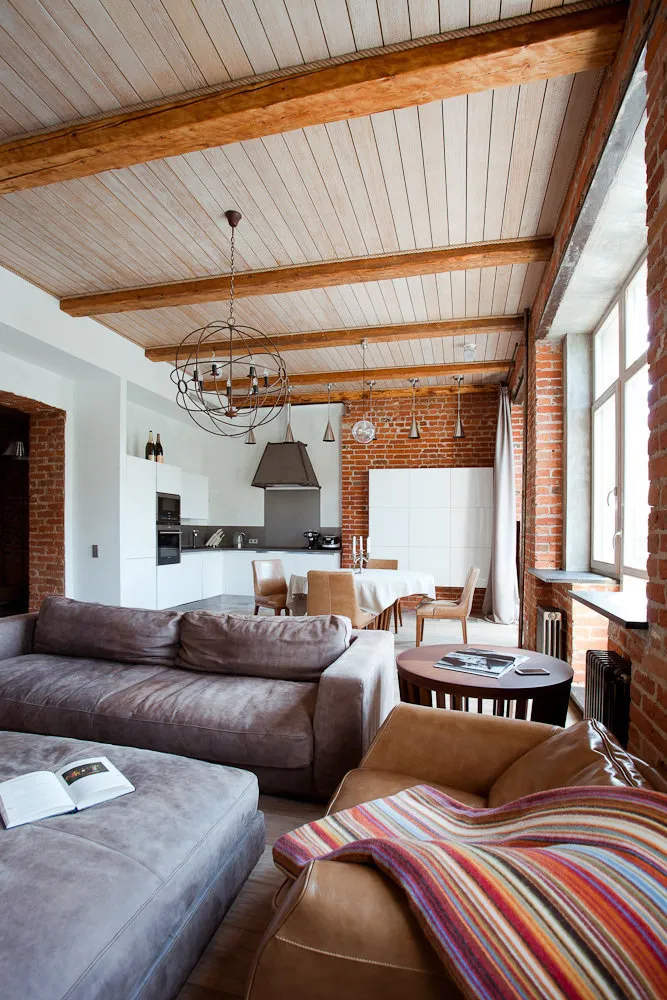 Design: Olga Borovikova and Irina Nikolaeva
Design: Olga Borovikova and Irina NikolaevaWhat Are Beams Made Of
As seen from the above, ceiling beams can be part of the house frame or represent a decorative element of the interior that has no functional purpose. Therefore, different materials can be used for constructing beams. In the first case, these are wood, metal, or reinforced concrete, while in the second case – gypsum board, polyurethane, and sometimes even plastic. Each of these materials should be considered in detail.
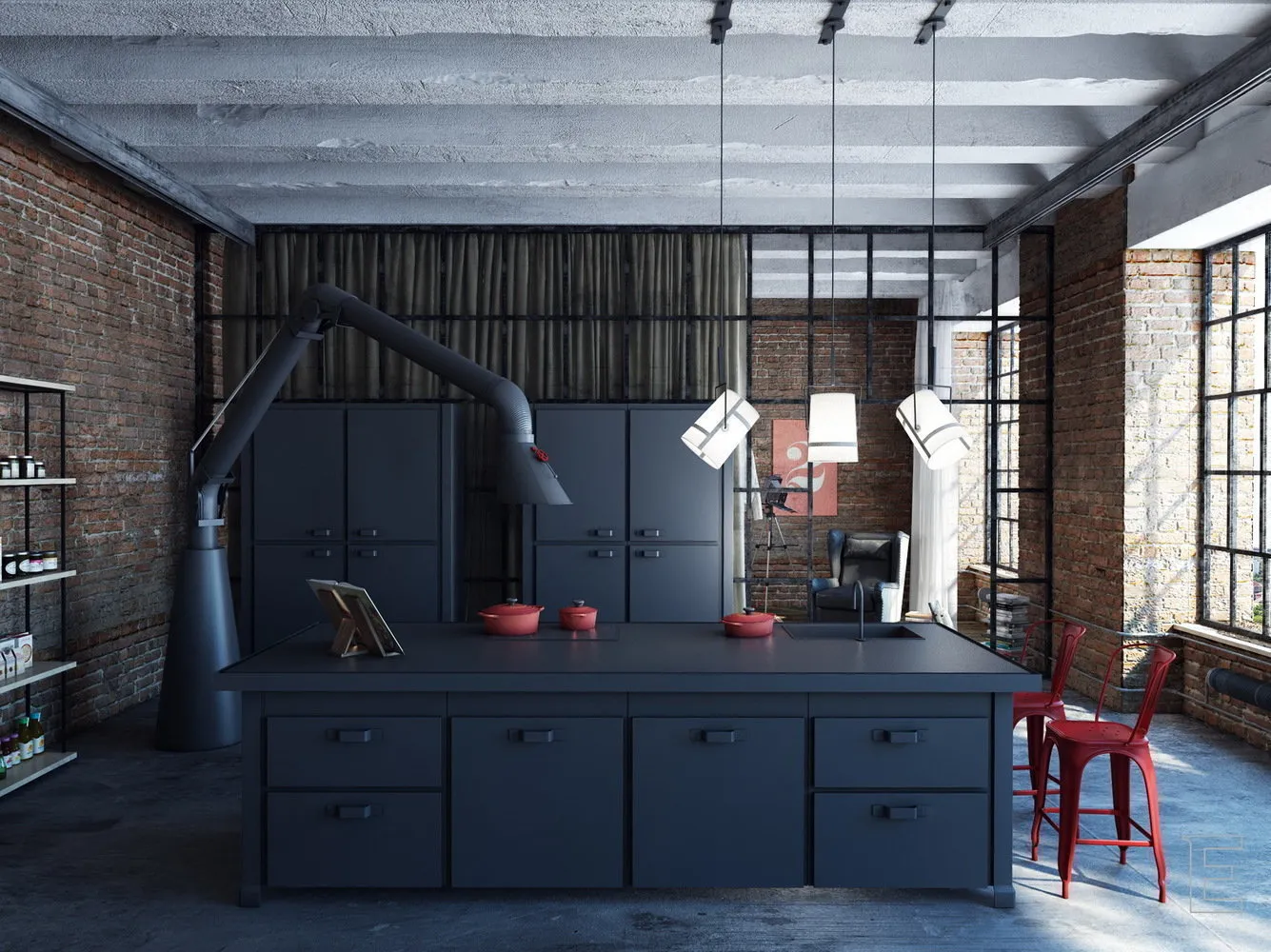 Wooden Beams
Wooden BeamsThese are items made from such wood species as oak, pine, ash, cedar, or larch. Preference should be given to the last three options. This is because pine is a rather soft material, and oak tends to crack during drying. To achieve a longer service life and for decorative purposes, ceiling beams made of wood are treated with special compounds: antiseptics (stains) or paint. In some cases, special mixtures are used that age wood, which requires a certain interior style: rural, eco, Provence, etc. Such an approach gives the room a cozy and solid look.
Regarding the placement of beams on the ceiling, there are several options. The structures can be placed directly on the surface, below it (fastened to opposite walls), or on the surface but with a transition to the vertical plane. In some cases, ceiling beams divide areas. For example, if in a large room the structure runs along the entire length, one side can be used for a relaxation zone, and the other – for a dining area.
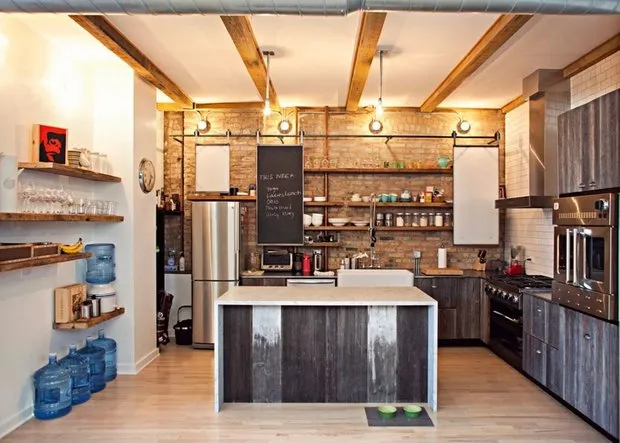 Metal Structures
Metal StructuresItems made of wood are quite an expensive luxury. Therefore, many followers of non-standard design prefer metal. This material is well-suited for housing in hi-tech, loft, and minimalism styles. Primarily, this is due to the fact that metal ceiling beams guarantee the creation of strict and straight lines, which is required by these styles. Usually, these structures are painted in white or black colors.
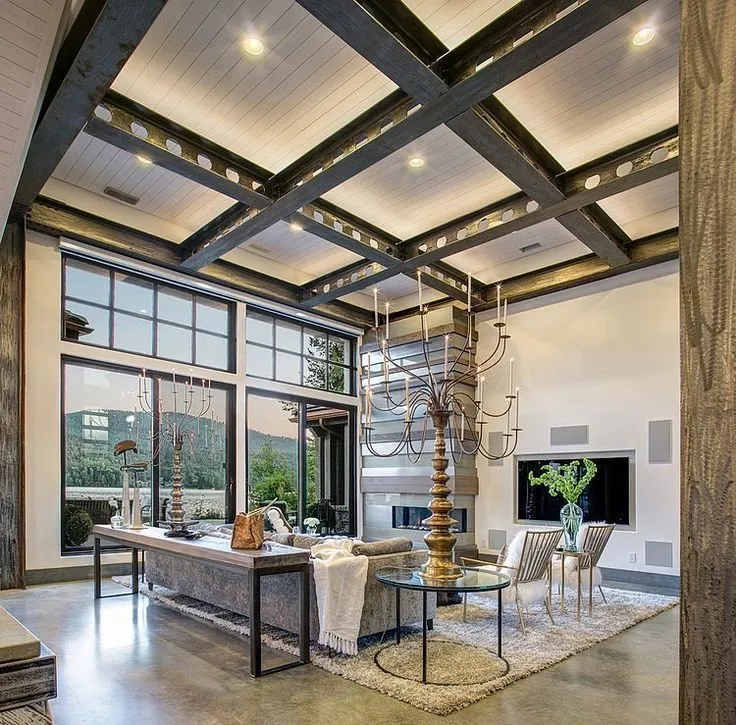 Using Gypsum Board
Using Gypsum BoardThis material is used to make imitations – false beams. These are P-shaped items with small weight. They cost relatively cheap, and if needed, they can even be made by oneself. Other advantages of gypsum board ceiling beams:
- ease of installation;
- a wide choice of shades;
- the possibility to imitate any natural material: stone, wood.
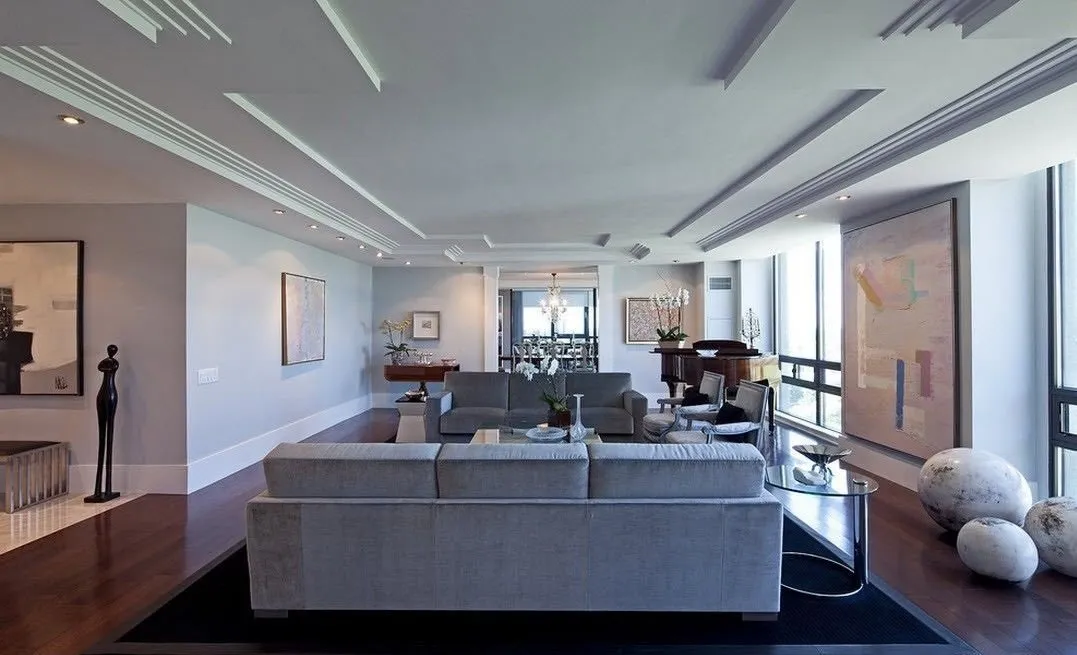 Polyurethane Systems
Polyurethane SystemsThese are artificial items with less weight compared to gypsum board. Polyurethane also has more accurate imitation of any natural materials. Ceiling beams made from polyurethane are successfully used in various stylistic directions: the market offers quite a variety of these items differing by texture and shade.
 Decorating Beams
Decorating BeamsEvery designer knows how important it is to pay attention to individual details in interior design. Ceiling beams are no exception. Of course, they can be left in their original form, but most homeowners prefer to treat the structures. What can be done?
- Brushing. Essentially, this highlights the texture of a wooden item. This technique allows to emphasize not only the features of a particular wood species but even show «traces» of beetle activity. Using brushing creates an impression that ceiling beams are about 200 years old.
- Textured Treatment. This is also artificial aging but simpler. It uses rough planing and treatment with special metal brushes.
- Vintage. This involves applying various compositions: varnishes, paints, and other mixtures that give beams an aged appearance.
- Ethnic Style. Here, ropes and forged elements are actively used, which are characteristic of country or cottage style, Provence.
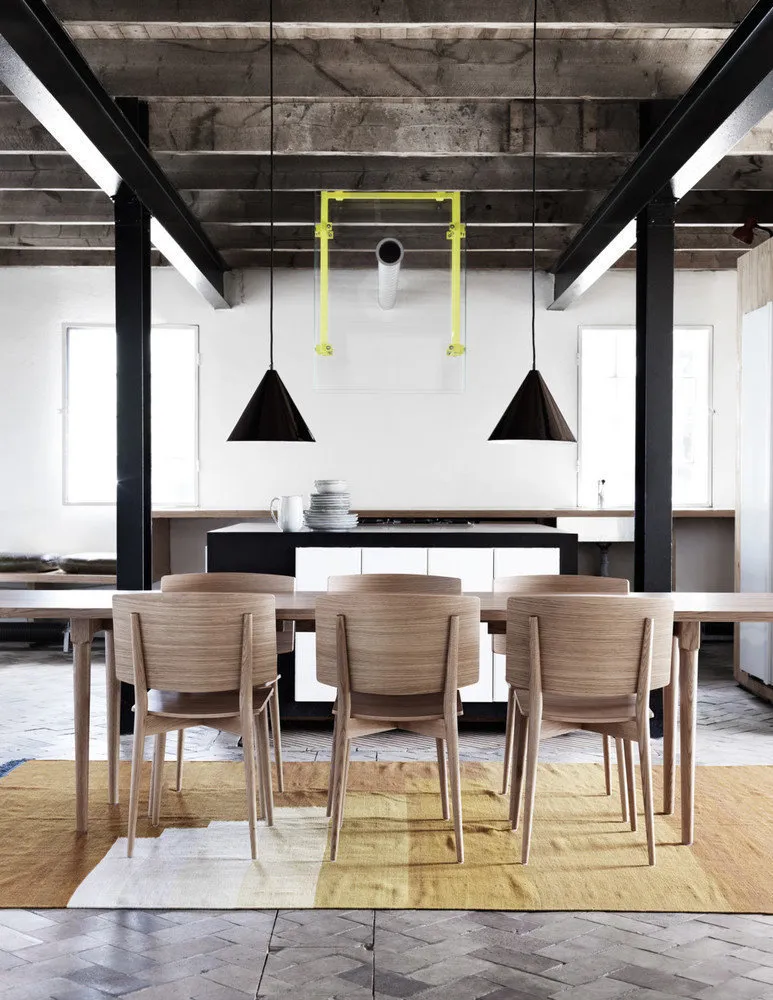 Suspended Ceiling with Beams: Features
Suspended Ceiling with Beams: FeaturesThis option looks great in rooms decorated in Scandinavian or classical styles, as well as hi-tech. The essence of the system is that a PVC suspended sheet is first installed, where the frame is made so that beams can be attached to it in the future (they are made from gypsum board or polyurethane due to their low weight). Lighting is mounted on the sheet – in the form of spotlights.
Color scheme implies a couple of options. In the first case, the suspended ceiling and beams are the same color but differ slightly in tone. The second option – creating a contrasting accent on the beam. That is, it is painted, for example, in a chocolate color, and the sheet – in milk. This approach gives the room significance and presentation. Therefore, such stylistic solutions are quite often seen not only in residential homes but also in offices and entertainment centers.
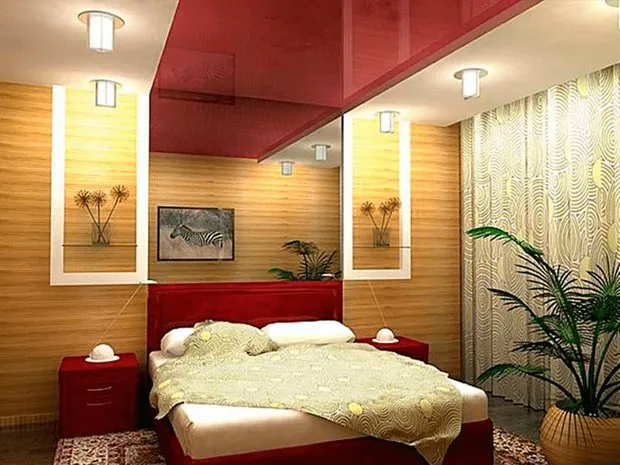 How to Hide or Remove Beams
How to Hide or Remove BeamsHowever, many homeowners do not even consider the presence of beams in their home interior. In such cases, load-bearing structures must be hidden. How to do it? One of the simplest ways is to install a suspended gypsum board structure. A good result is achieved with multi-level systems. There is also a simpler option – covering the beams with planed boards that have undergone processing: planing and coating with varnish.
It is worth noting the most beautiful and expensive way of masking – installing a coffered ceiling. It consists of numerous cells, recesses, borders, cornices. That is, the beams themselves remain but undergo serious processing, turning into a real work of art. Such a ceiling gives the room dignity and respectability.
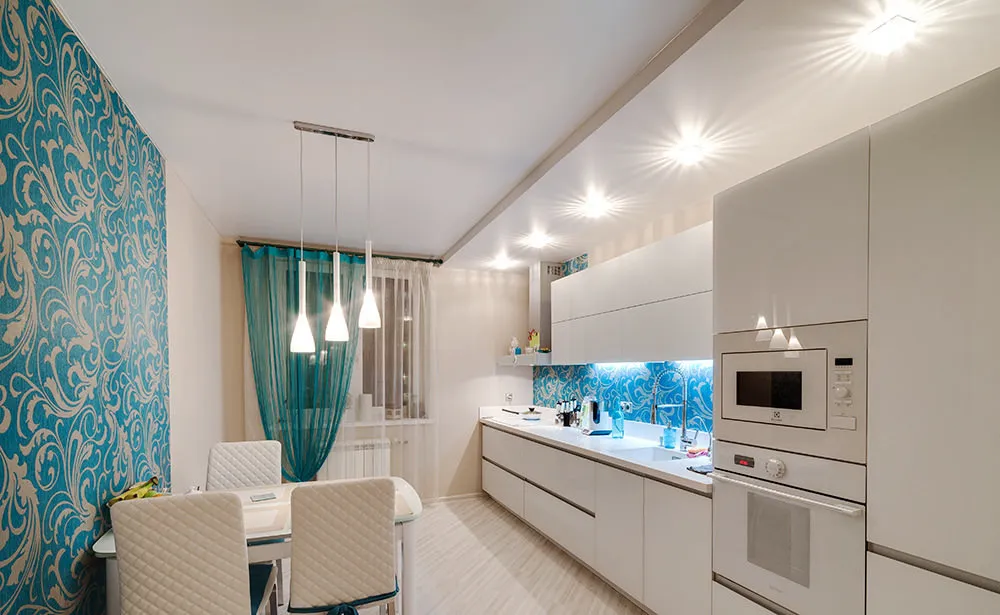 Decorating Ceiling Beams in Different Rooms
Decorating Ceiling Beams in Different RoomsHere, a lot depends on the chosen style of decoration and the specific features of the room. Therefore, when using beams in a particular space, one should keep some nuances in mind.
- In the Living Room. The best option is to use wooden structures, which are closest to such styles as classic or Provence. For example, a plank ceiling with beams located below can be made. Then point lights can be mounted into the main surface, and chandeliers can be hung on the beams. Another way is to whitewash or paint both the planks and described structures in a light shade. This option is especially good for small rooms, as it creates an effect of visual expansion of space.
- In the Bedroom. Properly selected material, color and placement of beams will add warmth and peace to this room. Here, too, wooden structures should be preferred, especially if the bedroom is on the attic floor. In terms of color, beams can be made in a contrasting or monochromatic style, matching the overall interior tone. Harmoniously looking structures with the same color as the floor or furniture are also suitable.
- In the Kitchen or Dining Room. In this case, white color is usually used for decoration. However, it can bring a certain sterile atmosphere, reminding of the hospital. Using beams with a dark shade will balance such an atmosphere and create a unique color scheme.
- In the Bathroom. Some property owners are convinced that wooden ceiling beams have no place in such a room, which is related to the possibility of rotting the wood under the influence of moisture. But this problem can be solved by using antiseptic compositions. If a false beam made from gypsum board is used, then buy special moisture-resistant Gypsum Board sheets with green color. Still, it should be added that in this case, the bathroom must have forced ventilation.
- In the Foyer. Here, it is not necessarily required to use only solid wood, other materials are also suitable. If the foyer is small, ceiling beams will help improve the situation. Their placement parallel to the longest wall visually elongates the corridor, making it appear more spacious.
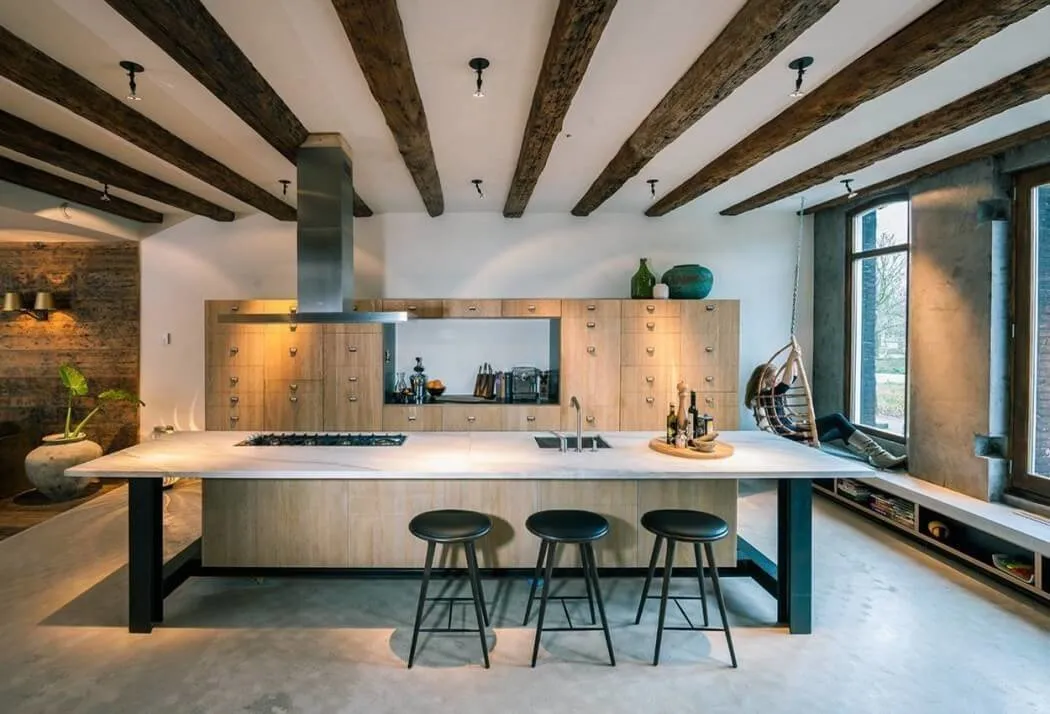 Ceiling Beams and Styles
Ceiling Beams and StylesUsing ceiling structures in the right way can significantly enliven and emphasize a particular stylistic solution.
- Country Style. The presence of ceiling beams here is the most natural and organic. Wooden structures (or their imitation) emphasize unity with nature, and a slightly subtle informal style creates an atmosphere of calm and promotes pleasant relaxation.
- Neoclassicism. In modern form, this style no longer implies cluttering the space with massive furniture. The same applies to the ceiling: the presence of cornices and other complex decorative elements is not necessary. Wooden beams with simple forms but well-treated with varnish and other compositions can be used.
- Loft. Industrial style implies exposed communications, floors, and other elements usually hidden. Here, it makes sense to use metal ceiling beams that will only emphasize the openness of the layout.
- Chalet. The presence of massive elements is simply necessary here! Wooden beams on the ceiling will harmonize perfectly with stone used in finishing. The structure should undergo rough treatment.
- Minimalist Style. By nature, it is somewhat cold and strict. Ceiling beams made from wood eliminate this drawback, bringing warmth and comfort to the room. It is not necessary to create a whole arcade of structures: two or three items will surely liven up the room.
- Antique Style. Here, preference should be given to wooden structures. They can be easily aged using special compositions. Also, an option with imitation is possible: in this case, attention should be paid to polyurethane items.

Color and Placement of Beams
In residential spaces, a positive effect from the designer's point of view is achieved by placing structures in contrasting colors relative to the main ceiling. There is also another option: select a natural shade identical to that of the ceiling beams. For living room decoration, it is possible to use structures arranged in a grid or Christmas tree pattern. An interesting effect is achieved by combining the color of beams with the shade of textiles (curtains, soft furniture upholstery) or furniture.
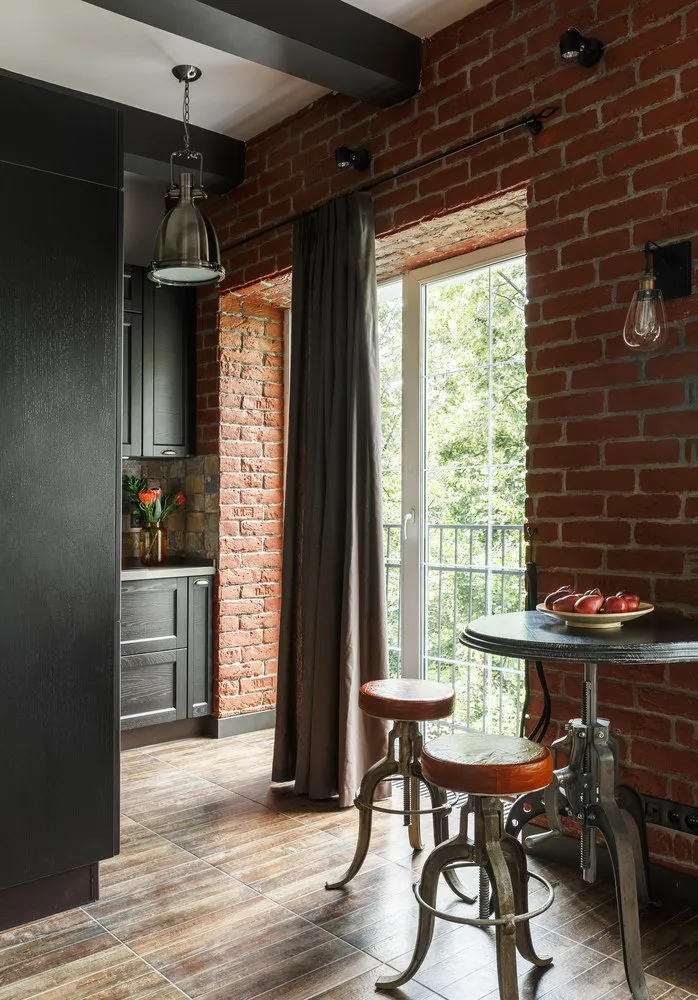 Design: Marina Sarkisyan
Design: Marina SarkisyanLighting of Beam Ceiling
Here, one should follow the main rule: there should be plenty of light. It is necessary to organize not only primary lighting in the form of chandeliers but also take care of additional lighting in the form of spotlights and wall sconces, floor lamps. Auxiliary light fixtures should not be flashy: beams themselves already attract attention. Use spotlights, LED strips, small suspended chandeliers. The latter can be arranged in multiple tiers (but don't overdo it!).
When installing imitation beams or using already existing ones, one should consider: the more frequently the structures are arranged, the more light fixtures will be needed. Otherwise, many shadows will appear, which negatively affects the overall interior design.
In conclusion, it should be added that using beam structures is only possible in rooms with high (from 3 meters) ceilings. Only in this case, taking into account the above recommendations, you will get a stylish and cozy room unique in its kind.
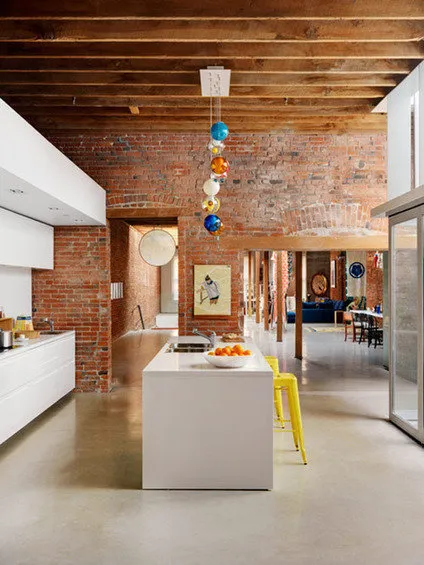






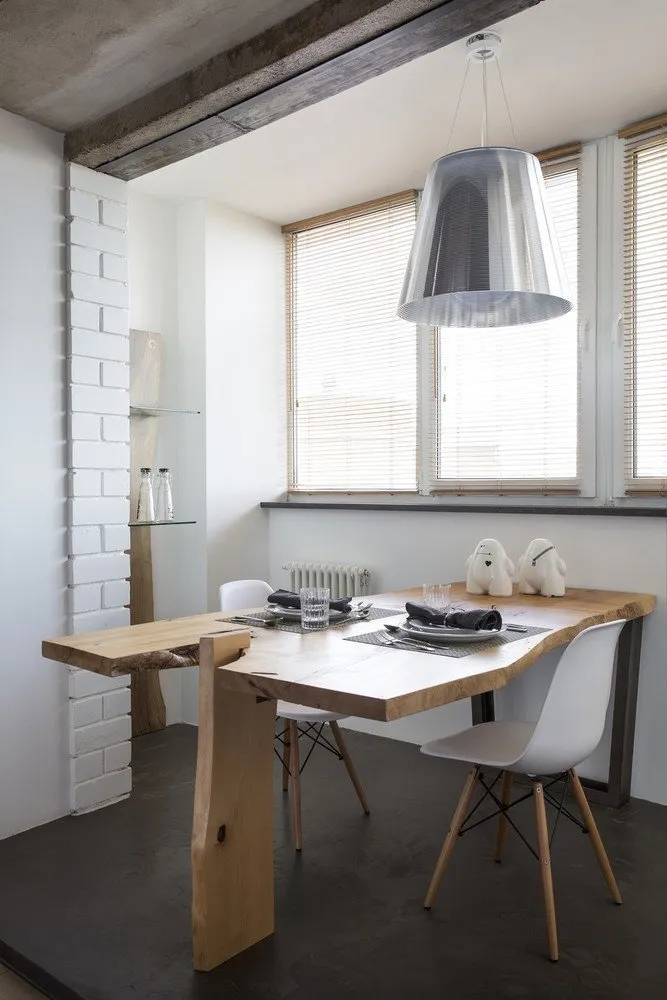



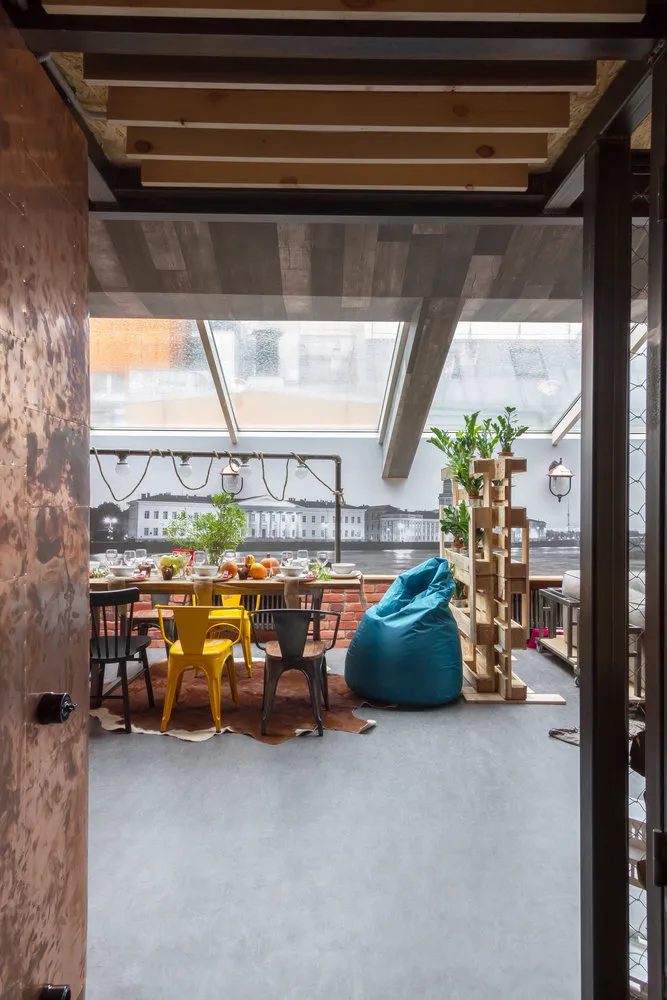
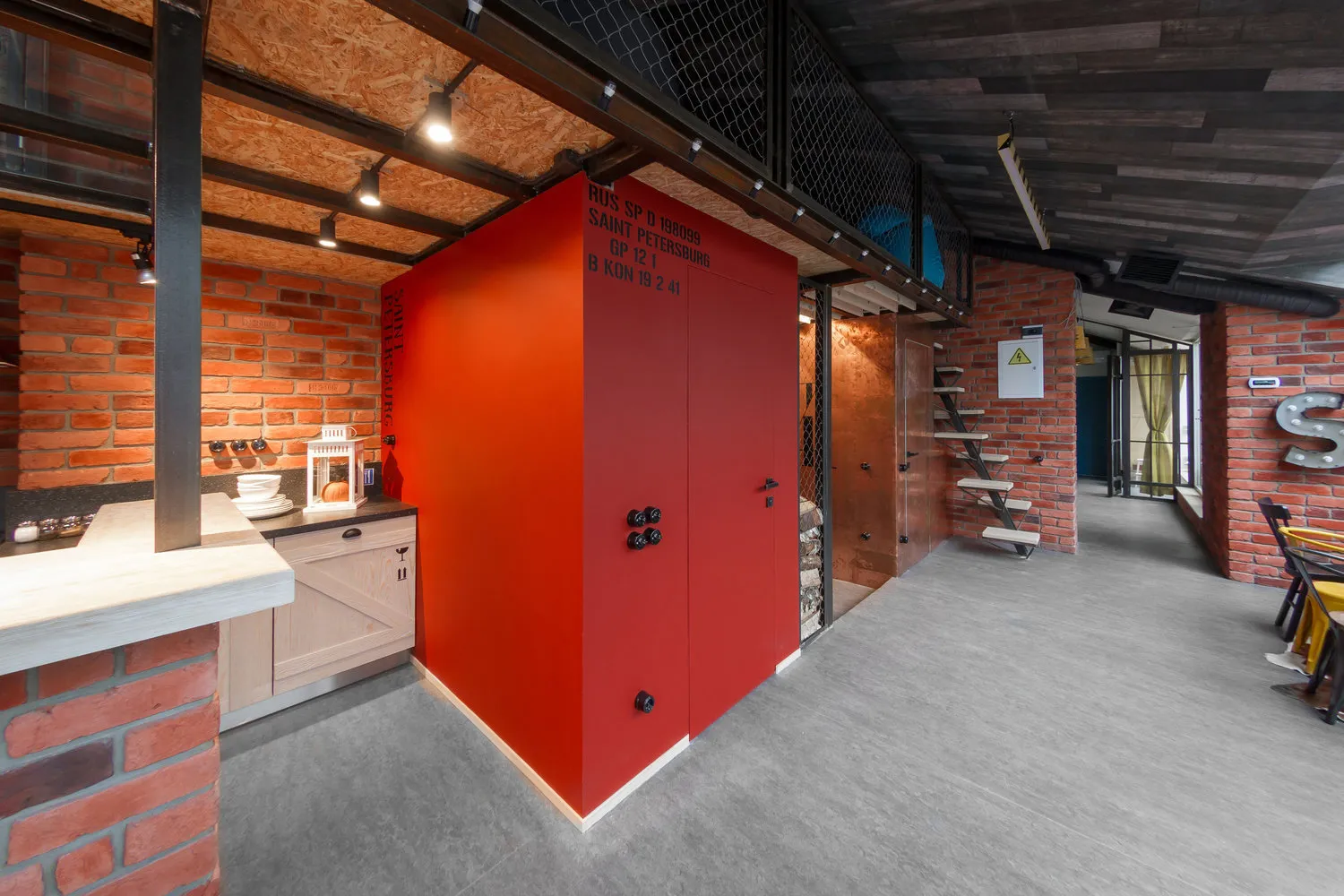

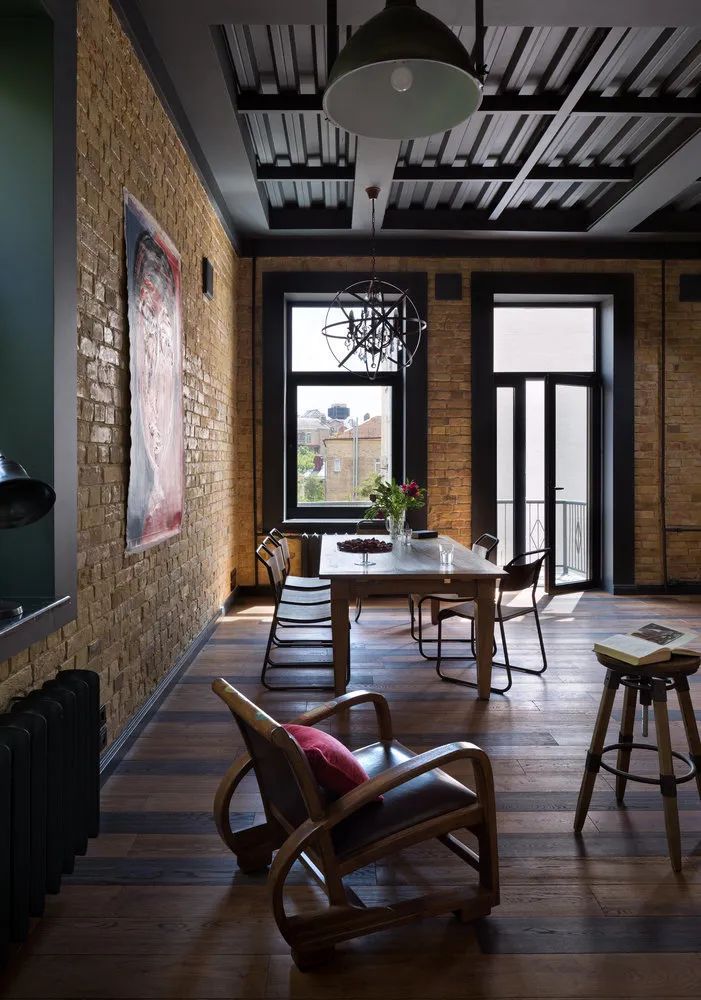
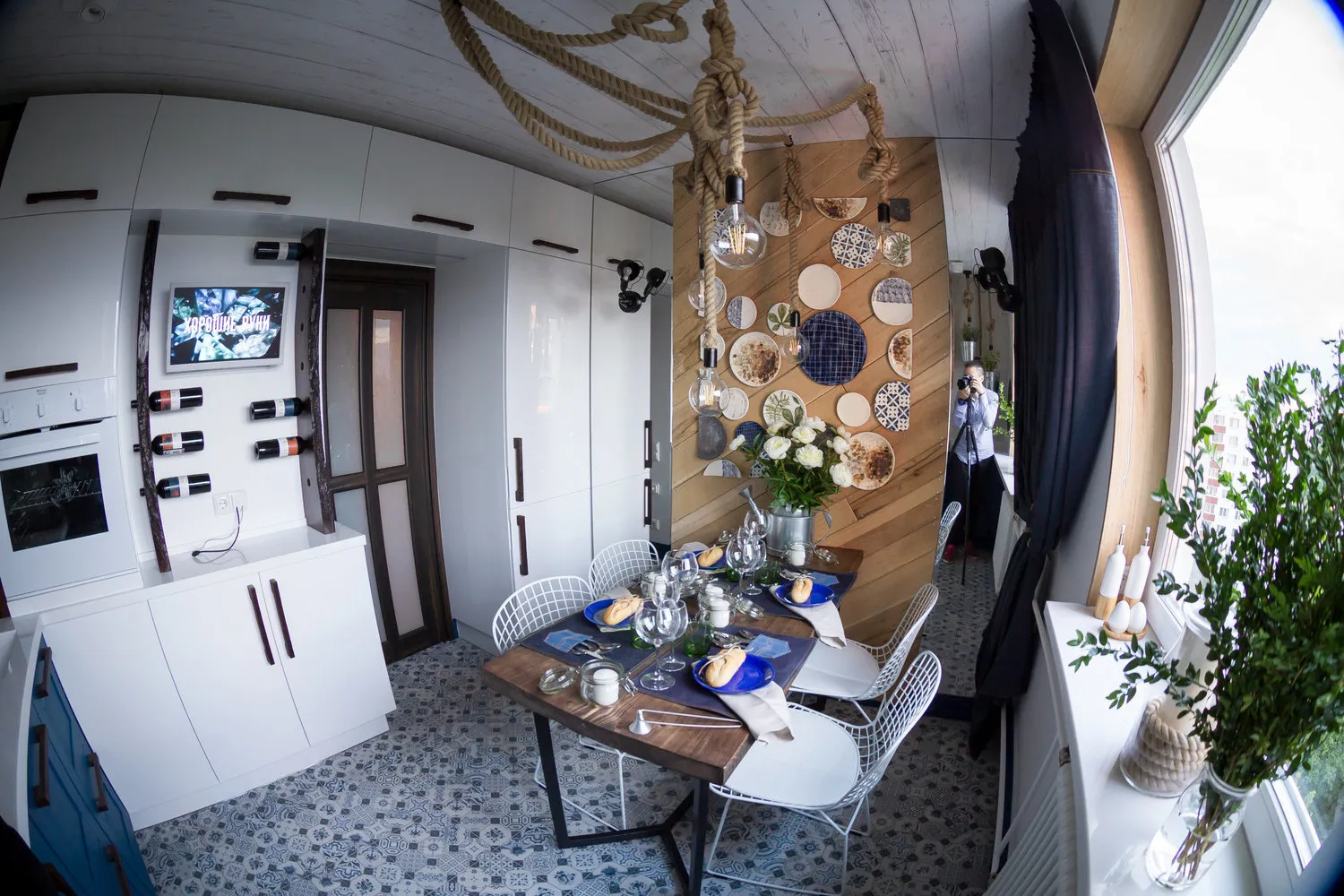


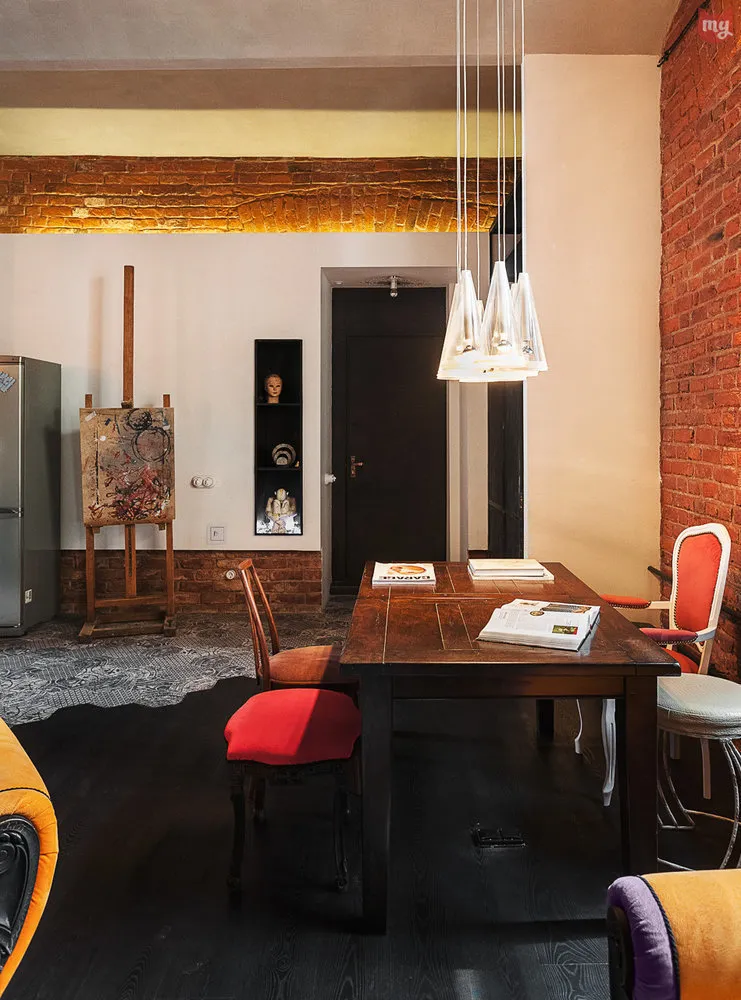
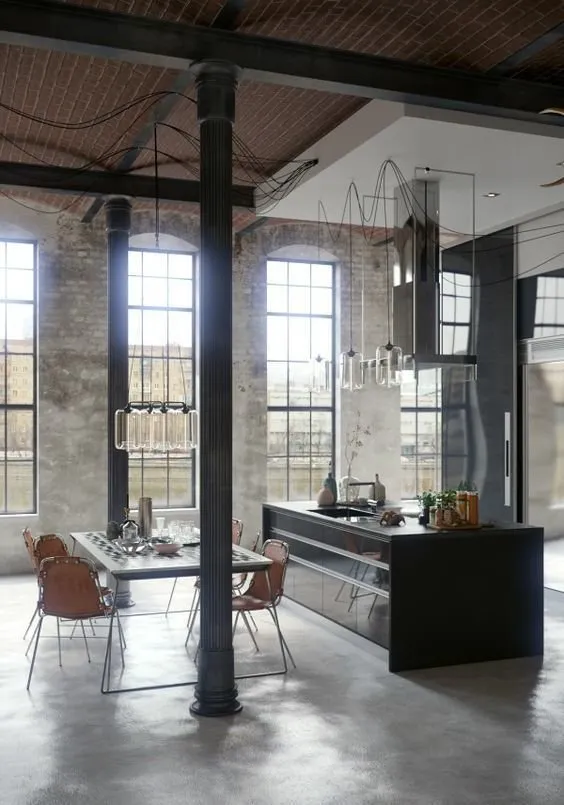
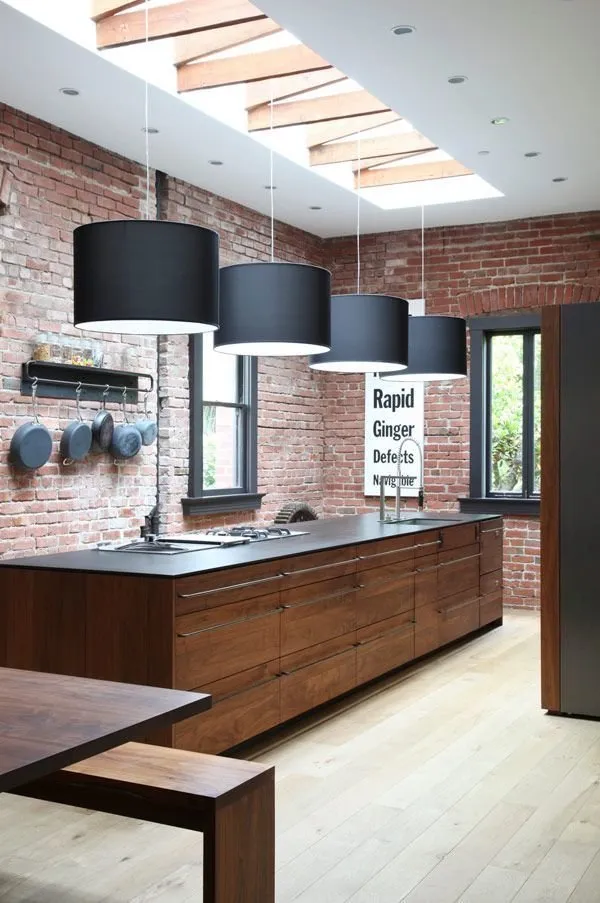



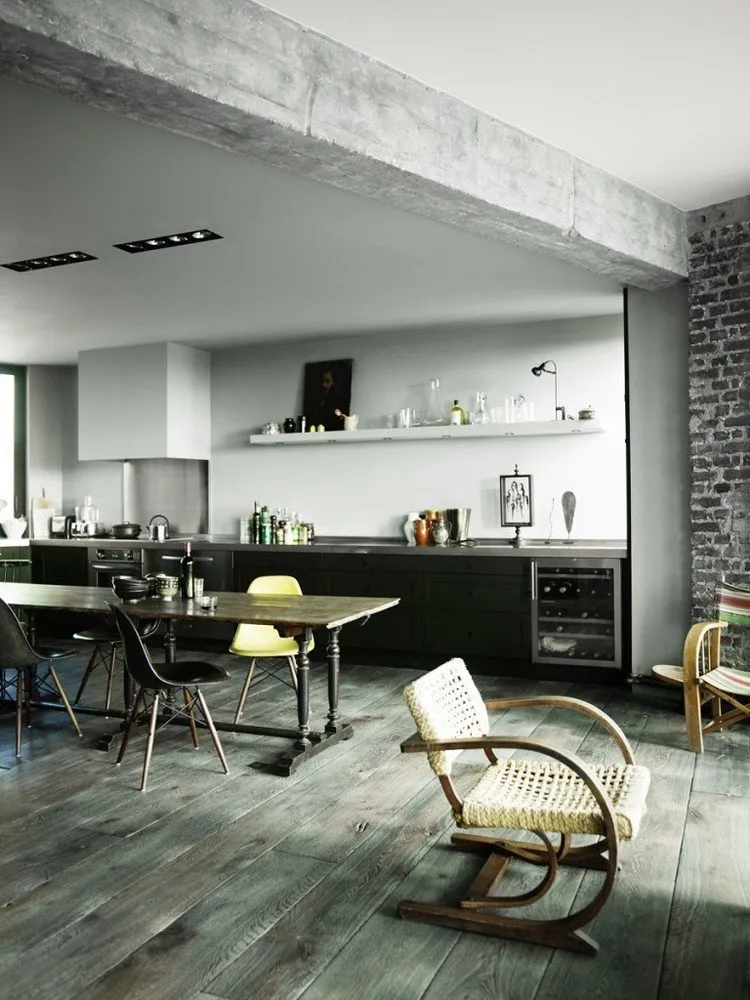
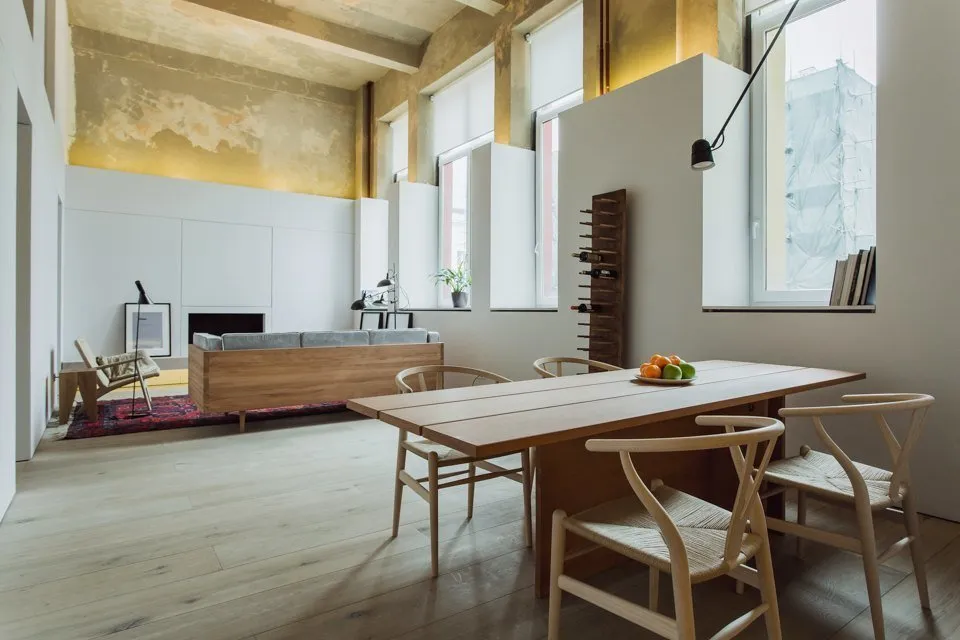
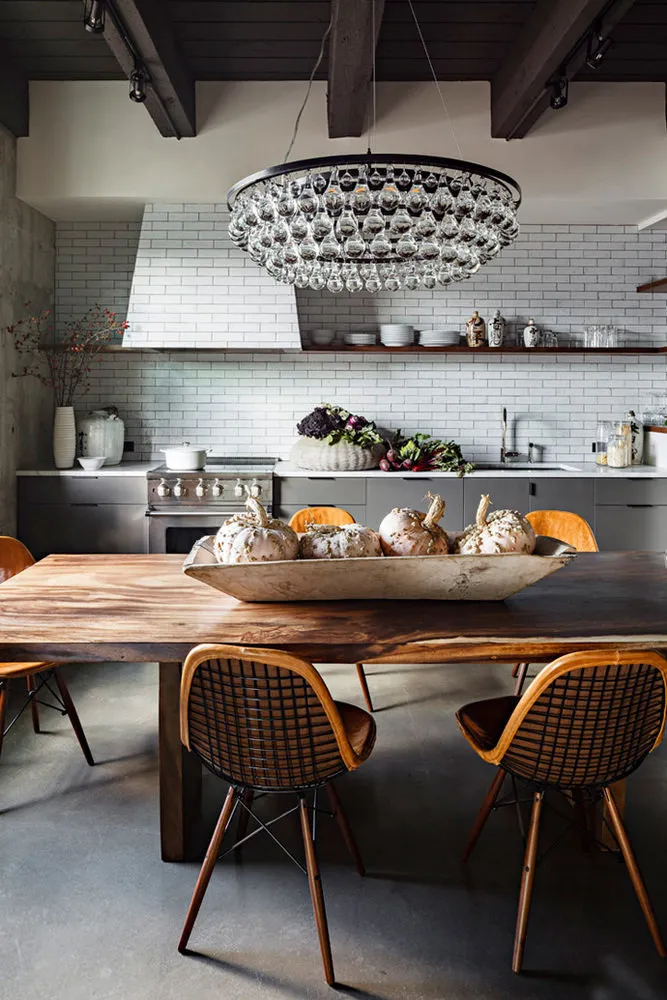

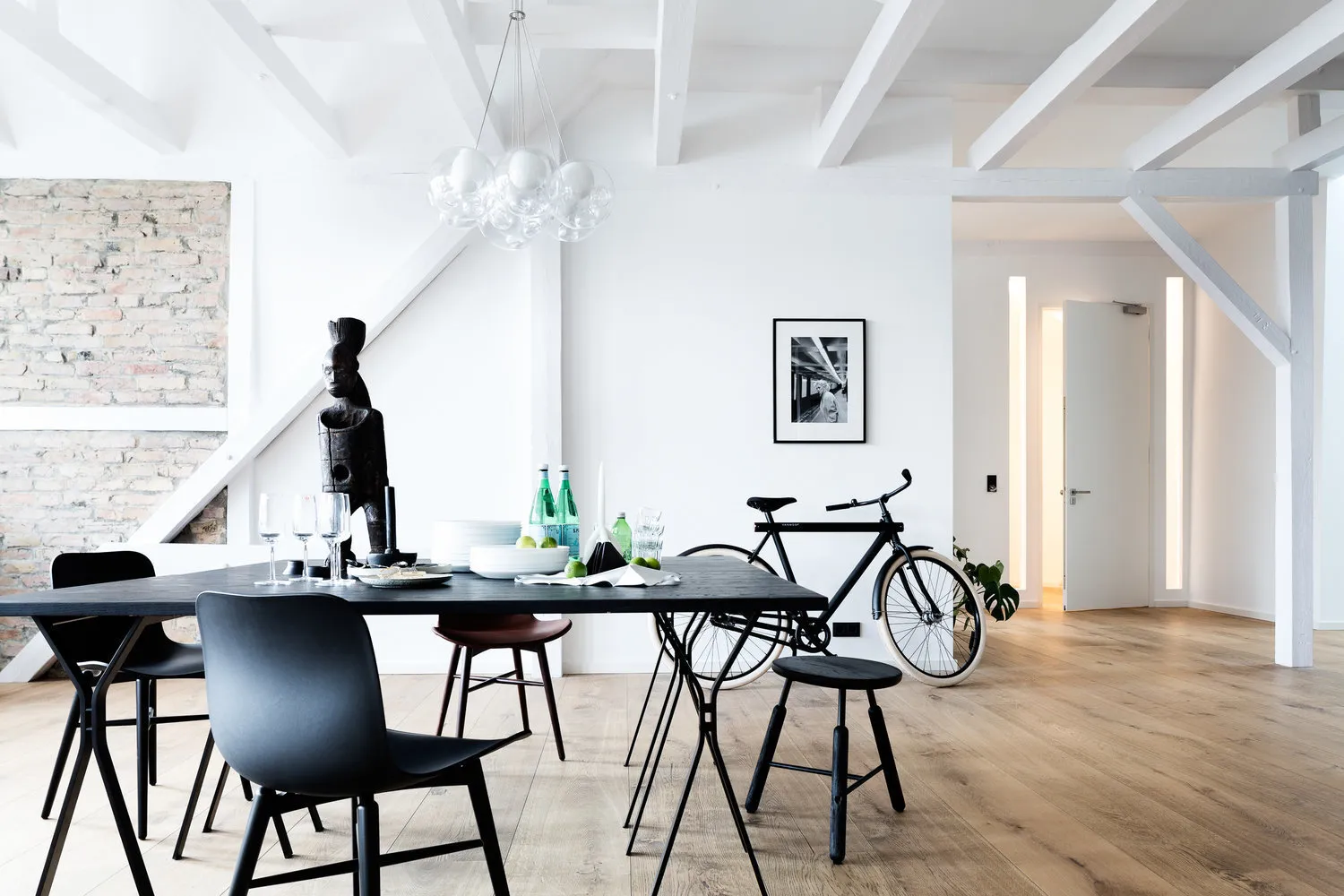
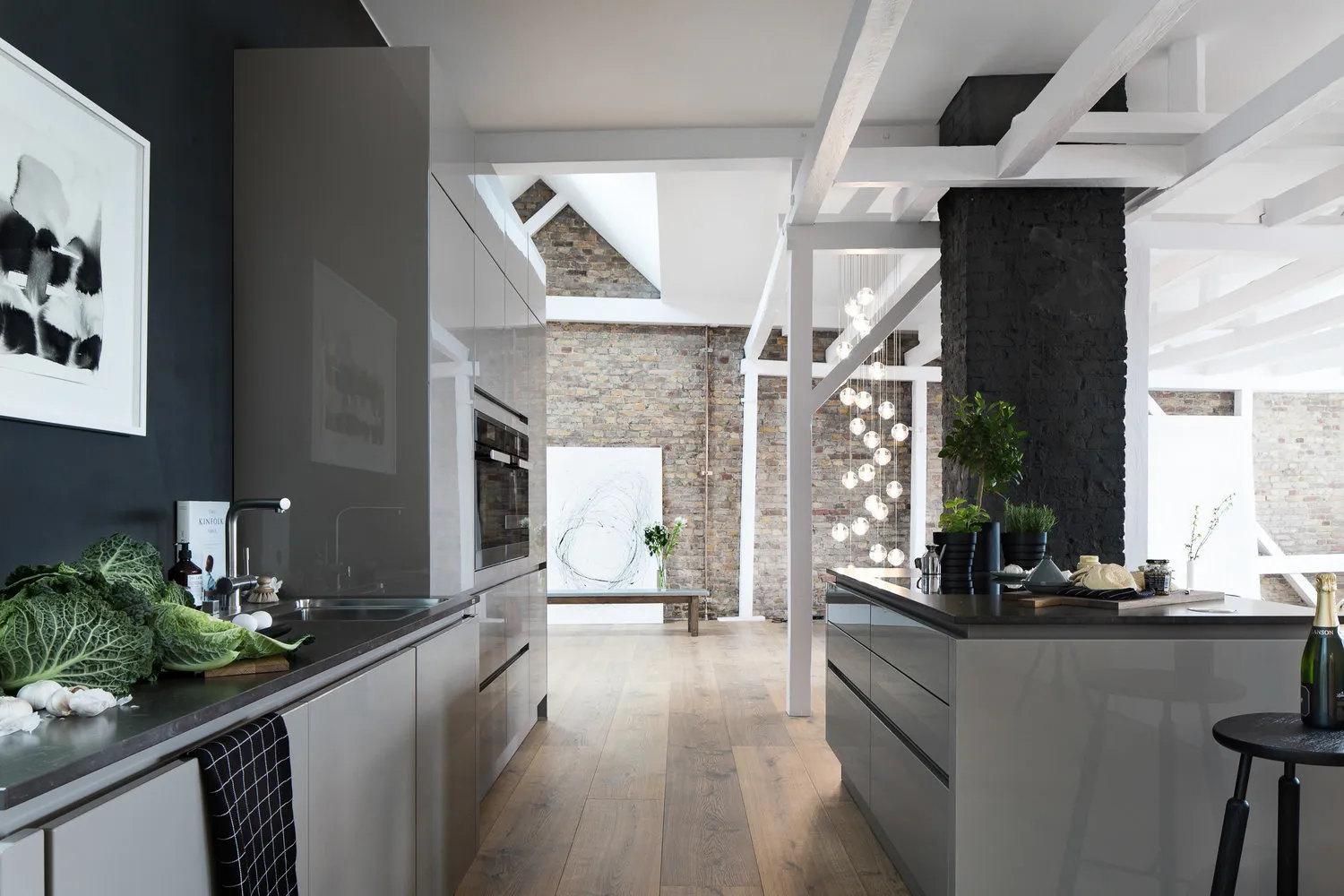


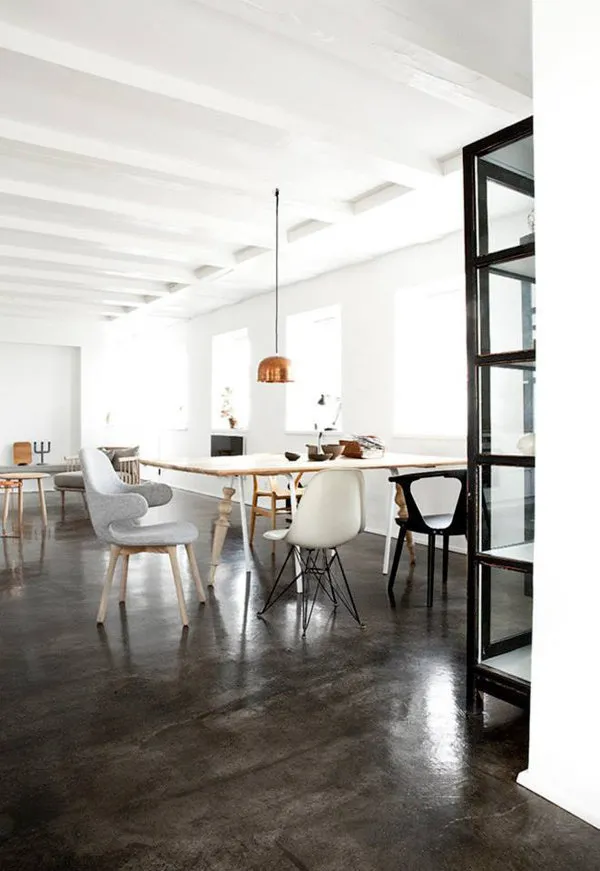
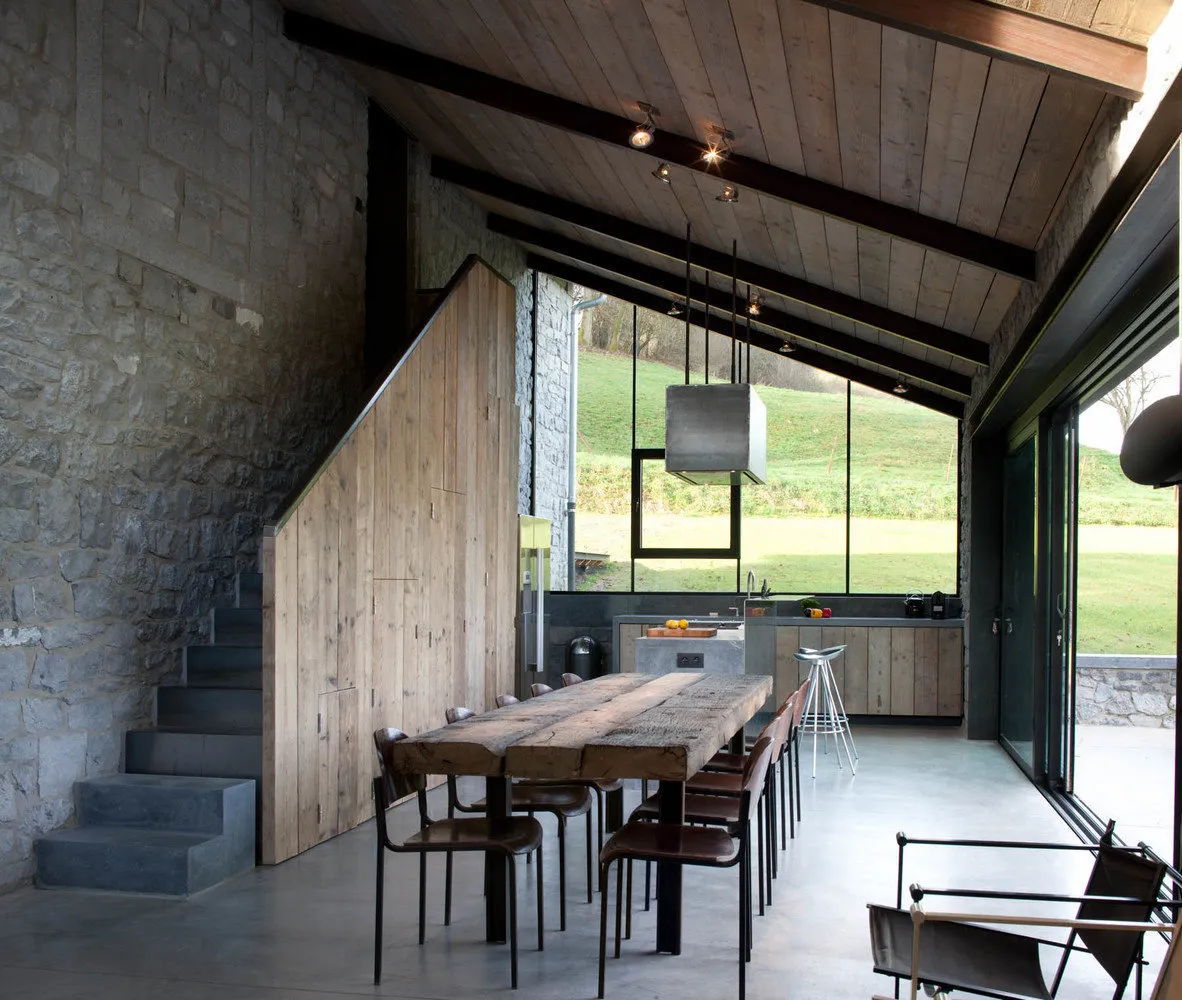
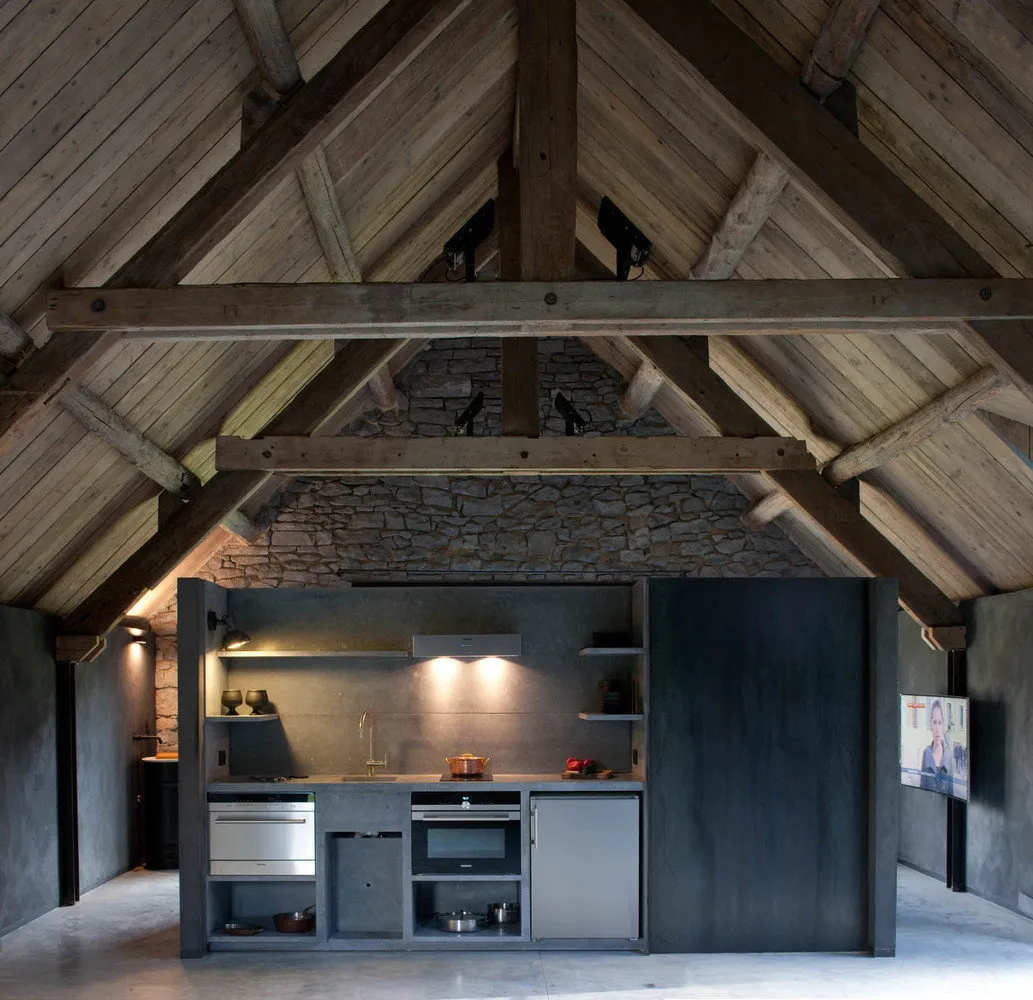


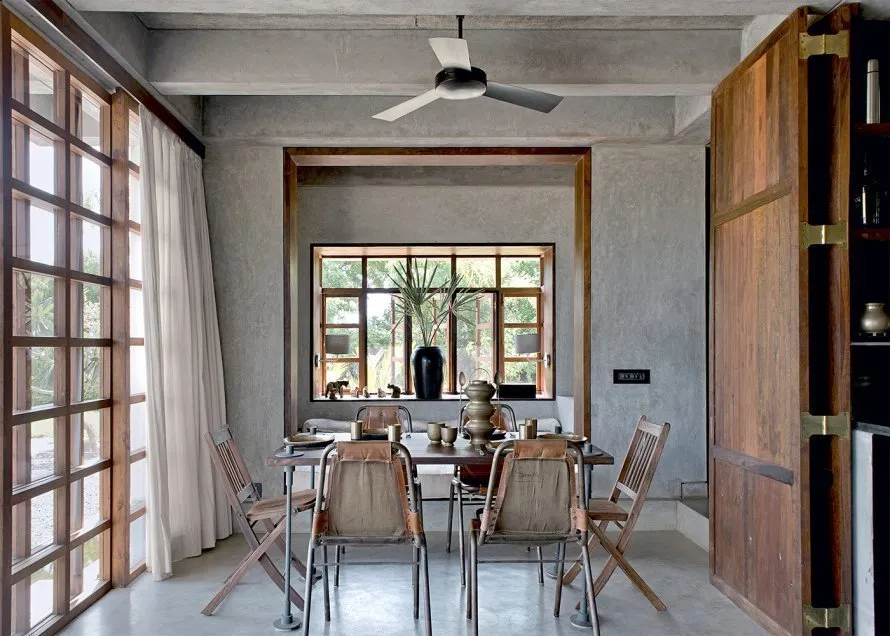

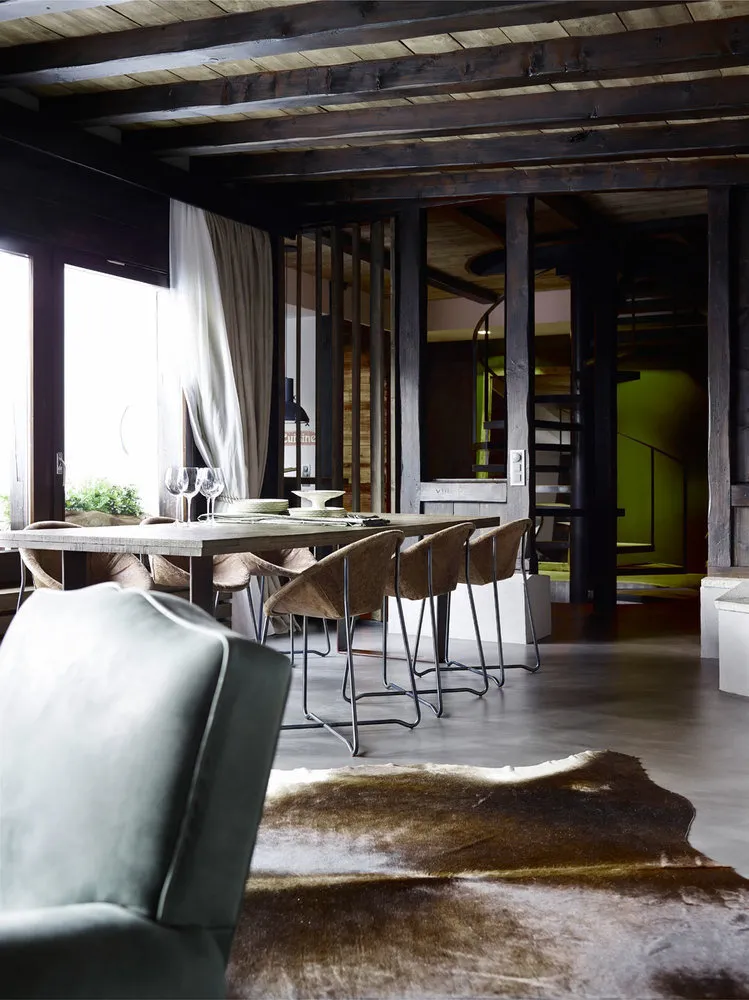
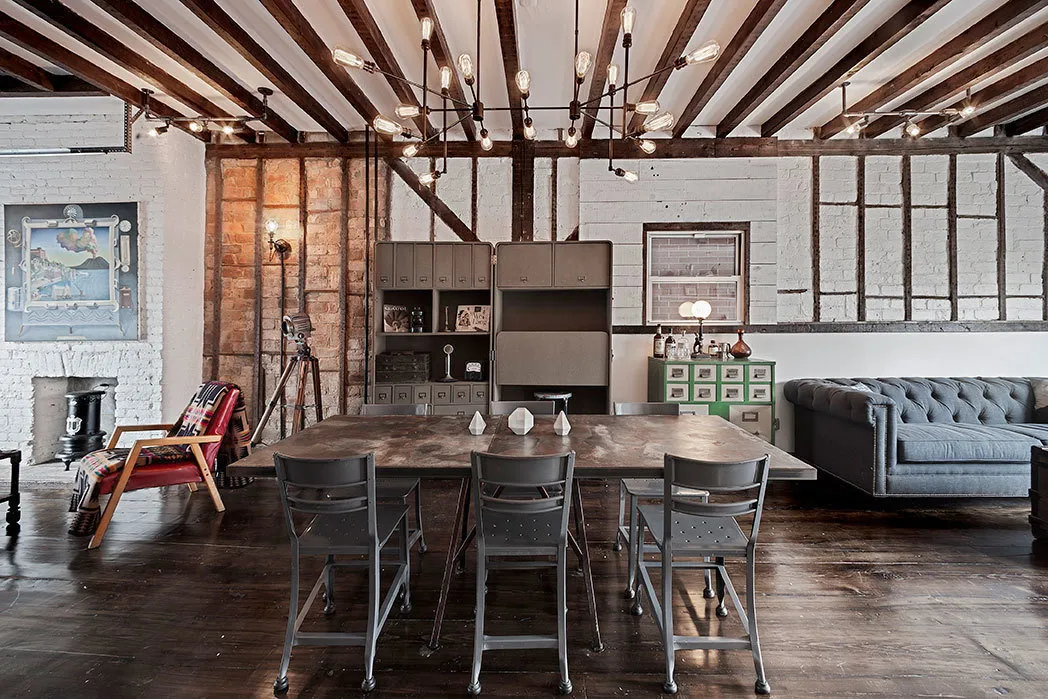

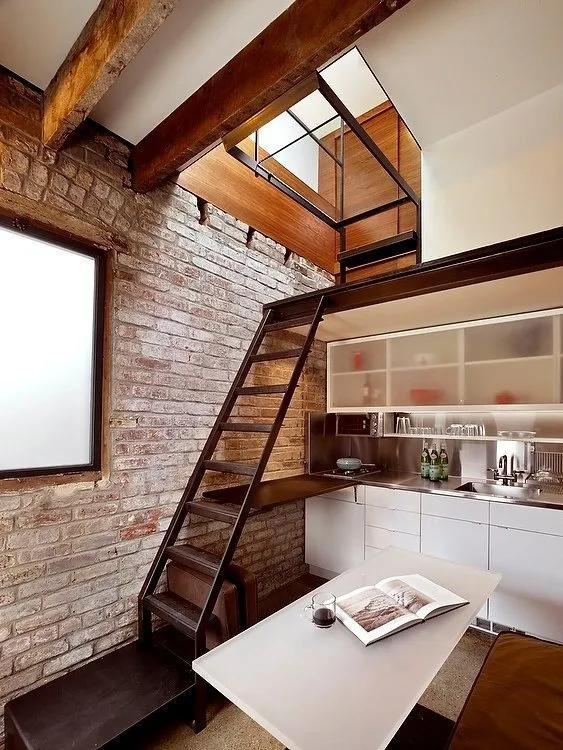
Design Variants of Ceilings with Beams
The cover features a design project by Olga Borovikova and Irina Nikolaeva.
More articles:
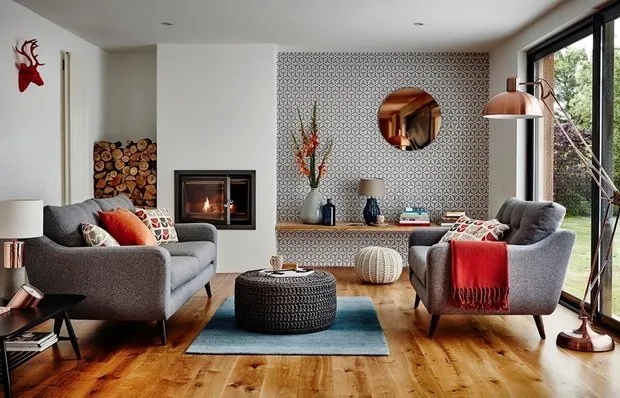 7 Tips for Preparing Your Home for Autumn
7 Tips for Preparing Your Home for Autumn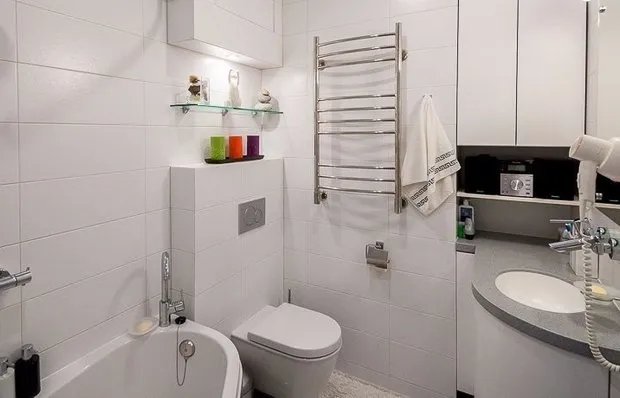 Bathroom Design 3 Square Meters
Bathroom Design 3 Square Meters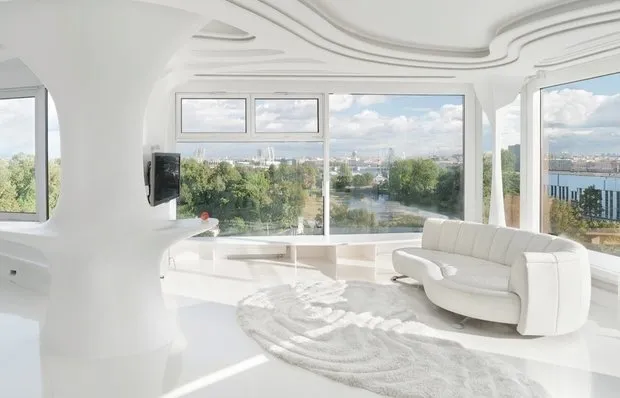 Beautiful Houses: Photos Inside and Outside
Beautiful Houses: Photos Inside and Outside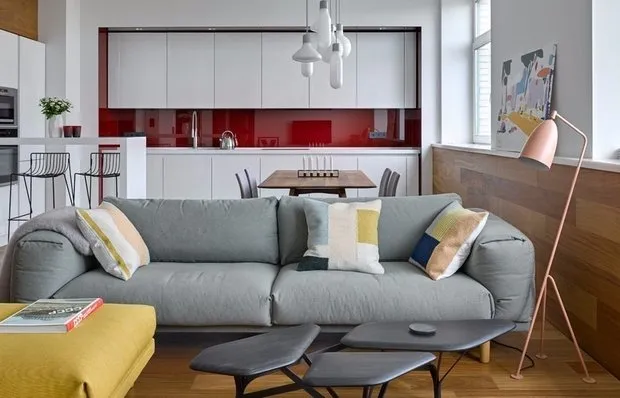 Design of a 35 Square Meter One-Room Apartment with Photos
Design of a 35 Square Meter One-Room Apartment with Photos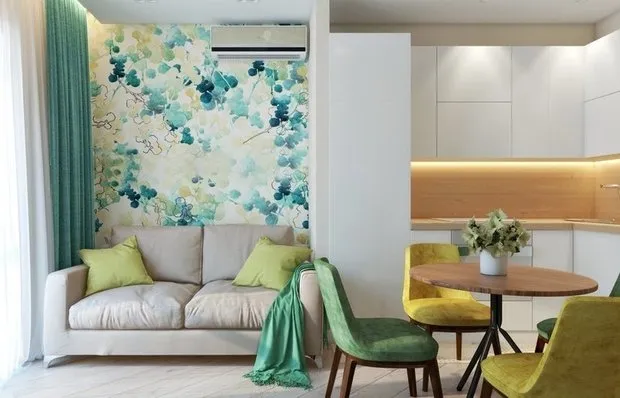 How to Properly Arrange Furniture in a Studio Apartment
How to Properly Arrange Furniture in a Studio Apartment 4 Reasons for the Popularity of Small Studios
4 Reasons for the Popularity of Small Studios More Than Design: Decorating Interior in Hygge Style
More Than Design: Decorating Interior in Hygge Style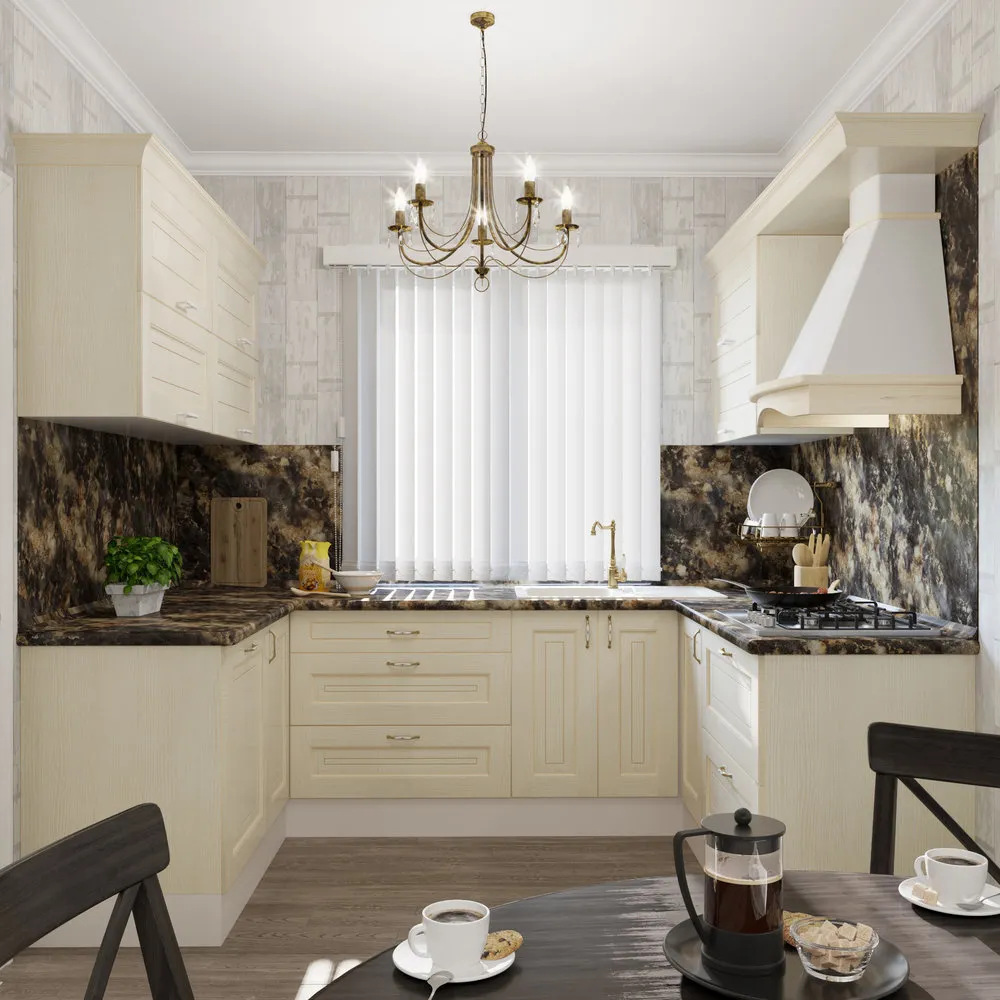 7 Ideas to Arrange a Small Kitchen
7 Ideas to Arrange a Small Kitchen